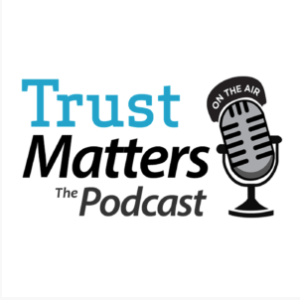Are You Self-Promotion Avoidant?
 Have you ever felt compelled to share positive information about yourself with a boss or supervisor and – instead – developed lock-jaw, unable to get the words out? Your mind starts to spin into thoughts like, “What if it just sounds arrogant? I don’t want to be perceived as an egomaniac!”
Have you ever felt compelled to share positive information about yourself with a boss or supervisor and – instead – developed lock-jaw, unable to get the words out? Your mind starts to spin into thoughts like, “What if it just sounds arrogant? I don’t want to be perceived as an egomaniac!”
And so, in an instant, you talk yourself out of sharing information that can be valuable to you AND the organization as a whole, all because we’re culturally conditioned to avoid self-promotion.
Self-promotion can be Good
Sharing strengths and successes can help organizations identify and understand how to leverage their employee base in the best way to achieve great outcomes. If leaders don’t know how their employees are succeeding and what their strengths and interests are, they don’t know how to leverage, motivate and properly develop them.
The result of not sharing our strengths and successes is unfulfilled team members, disengagement and even lack of innovation.
So Why Does It Feel Bad?
While we can rationally understand the very real benefits, most of us still avoid self-promotion because it seems so, well…self-centered. That avoidance stems from fear – a roadblock that puts a hard stop to being our most authentic, thriving selves.
Allowing our fear to constrain our actions is an indicator of high self-orientation. It may seem paradoxical, but when you are silent about your accomplishments, you are putting yourself first by avoiding what you fear: being seen as arrogant or egotistical.
And it’s not just the person being silent who suffers. Managers, supervisors, leaders and stakeholders are left in the dark about the untapped talent right in front of them. When your strengths finally do come to light you will likely hear, “I wish I would have known earlier!”
Overcoming Under-promotion
The first step to addressing this challenge requires a mindset shift. Our mindset, drives our behaviors which in turn drive our results. It is easy to fall into the trap of believing self-promotion is a bad thing because it is “all about us” or too self-oriented. Balance out that thinking by asking yourself, “What are the benefits to others?”
If you’re still skeptical, make a list of all the things – good and bad – that might happen if you share your successes, for you and for others. It might look something like this:
| Benefits | Pitfalls |
|
|
Focus primarily on what sharing your accomplishments provides others, but don’t forget to include the impact to you, as well.
Appreciate the Positive
The second step to overcoming this very common hurdle is to become aware of negativity bias, which is defined as, “Our proclivity to attend to, learn from, and use negative information far more than positive information.” (PositivePsychology.com).
Here’s an example:
You have worked for weeks on a big client presentation. It was a huge success… your boss and co-workers are giving you tons of praise. In response to the accolades, you bring up how the presentation slides froze for a short time. Everything else went off without a hitch, but your focus is on exaggerating the small hiccup that didn’t have much of an impact.
The next time you are in this type of situation, train yourself to stay positive with this two-step approach:
- FIRST, identify 3 things that went well. What are you proud of? To what did your client or teammates respond positively? When did you feel energized? Sometimes just getting through a tough presentation is a win. Sometimes it’s seeing the spark of understanding as you explain a new idea, or hearing the team start talking excitedly about how the project turned out.
- Next, look for what can be improved. Think about what would make your presentation better or ask your teammates for feedback. Focusing on improvement versus what went wrong is key. You can’t change what already happened, but you can learn from it.
Train your mind to go to the positive immediately, and the negative won’t take up so much headspace. This will also help you become more comfortable sharing your successes with others.
Get comfortable “Tooting Your Own Horn”
Like with any habit, it takes discipline and time to feel natural. But if you practice these two techniques, you will notice your mindset shift to, “I’m not ‘selling myself’, instead I’m sharing pertinent information that helps my boss and the leaders of the company do what is best for the entire organization.”
Of course, when it comes to advocating for yourself, it’s important to be realistic about what is self-promotion and what may be arrogance or egotism. Be self-aware and humble, and consider not just what to share, but how to talk about it.
When done in a way that comes from low self-orientation and authenticity, you can drive your career success and fulfillment, leading to greater performance for your team, the organization and your clients.

 I recently shared my point of view on
I recently shared my point of view on  It’s been (gulp) more than 20 years since I got my MBA.
It’s been (gulp) more than 20 years since I got my MBA. Countless studies and articles show that trust and high performing teams are interlinked. One such
Countless studies and articles show that trust and high performing teams are interlinked. One such 
